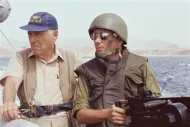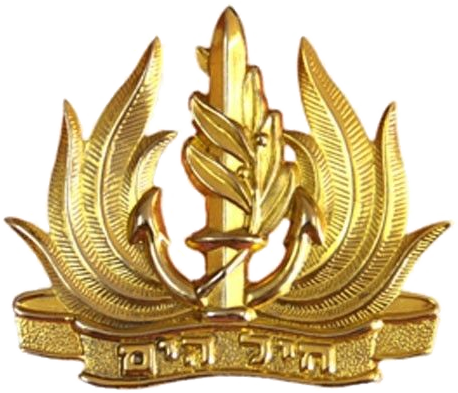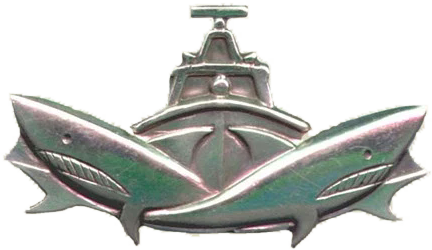ANALYSIS: How the tide is turning against Iran, Al Arabiya, Heshmat Alavi, August 28, 2017
(But please see, Iran, operating from Syria, will destroy Europe and North America. — DM)

Iranian President Hassan Rouhani delivers a speech to the parliament in Tehran on August 20, 2017, (AFP)
As ISIS is losing ground in its two last enclaves of Raqqa and Deir el-Zor, there are many rightfully concerning reports of Iran seeking to chip further control in Syria.
All the while, there are also signs of contradictory remarks heard from senior Iranian officials, parallel to indications on the ground of how international counterparts are seeking their own interests that fall completely against those of Tehran’s.
Such incoherency signals nothing but troubling times ahead for Iran in losing its grasp of strategic interests across the Middle East, including Syria.
‘Not tantamount to meddling’
Similar sentiments were heard recently from Iranian Foreign Minister Mohammad Javad Zarif and Revolutionary Guards (IRGC) Quds Force commander Qassem Suleimani. Zarif exerted himself to defend Tehran’s carnage in other countries under the pretext of a mandate to defend human rights.
“The foreign policy of the Islamic Republic, based on the constitution, is a policy that is naturally founded on human rights. What is the meaning of human rights? It means defending the rights of innocent against oppressors… We have this definition in our constitution. This is not tantamount to meddling,” he claimed.
Zarif’s remarks were followed by Suleimani’s insight. “There were friends in high places, in our country’s domestic and foreign hierarchy, who argued not to get involved in Syria and Iraq, and sit back and respectfully defend the revolution. One individual asked you mean we go and defend dictators? The leader (referring to Iranian Supreme Leader Ali Khamenei) provided a clear response in saying when you look at the countries we have relations with, who is a dictator and who is not? We simply look at our interests,” he explained.
A troubling slate
The relations Khamenei refers to promote an image into the very nature of his establishment. Bashar Al-Assad’s dictatorship in Syria can be read as a reign of death and destruction. With Iran’s support and in the absence of a coordinated global response over 500,000 have been killed, scores more injured, over 12 million are internally displaced or forced to seek refuge abroad, and swathes of the country is left in ruins.
Iraq’s former prime minister Nouri Al-Maliki, another figure described as Tehran’s puppet, has a similar report card unfortunately gone neglected. The Sunni community was the main target of Al-Maliki’s Iran-backed wrath, fueling the rise of ISIS.
In Yemen the Houthis and ousted dictator Ali Abdullah Salah have also been at the receiving end of Iran’s support. As the Saudi-led coalition advances against Iran’s disastrous efforts, signs of major rifts, and even reports of clashes between the two forces, constitute a major quagmire for Tehran.
The Lebanese Hezbollah, Iran’s proxy offspring brought to life by the IRGC back in the early 1980s, are known to instigate the Syrian war by supporting Al-Assad, and pursuing Tehran’s interest wherever needed across the Middle East.
Looking abroad, Iran has established cozy relations with North Korea and Venezuela, both dictators whose people are starving. The Pyongyang-Tehran axis is especially raising concerns considering their close nuclear and ballistic missile collaboration.
Iran’s own dictatorship
This is a regime provoking a variety of bellicosities. Recent threats by Iranian President Hassan Rouhani and Atomic Energy Organization chief Ali Akbar Salehi of relaunching certain nuclear activities are reminders of the dangers of Iran acquiring nuclear weapons.
Extending equally to such concerns, and not receiving adequate consideration, is Iran’s ongoing human rights violations. Over 100 executions were reported in the month of July alone. This comes after more than 3,000 were sent to the gallows during Rouhani’s first term.

President Hassan Rouhani with Syrian Prime Minister Imad Khamis at his office in Tehran, on Jan. 18, 2017. (Iranian Presidency Office via AP)
More recent cases include the ongoing hunger strike of dozens of political prisoners in a jail west of Tehran going on for nearly four weeks now. These inmates are protesting prison guards resorting to violence and other repressive measures used to impose further pressures.
Concerned of this and the overall situation in Iran, Amnesty International in a statement demanded Iranian authorities “allow international monitors, including the UN Special Rapporteur on the situation of human rights in Iran, to conduct independent, unannounced inspections of Raja’i Shahr Prison and other prisons across the country.”
While this and many other such cases deserve an international inquiry, they do signal a significant change in tone of courage in Iran’s powder keg society against the ruling regime.
From others’ perspectives
Fortunately, there is an end to be seen in the Syrian war. However, six years after the spark of that revolution, the Syrian people have suffered tremendously mainly due to Obama’s compelling kowtowing to Iran.
The war has been draining Iran, forcing it to seek the support of other parties, including Russia. The more parties with stakes in Syria, and with the US taking a far more active stance, the more Iran sees its future in the country threatened.
As the Levant’s forthcoming is being blueprinted, high on the agenda must be thwarting Iran’s interests. With ISIS defeated in Iraq, there will be no legitimacy for Iran’s presence in Iraq in any shape or form. The same argument goes for Syria.
The international community, coming to realize Iran’s destructive nature, should take the initiative and demand the eviction of all Iranian elements from Syria, including IRGC members and foreign proxy members transferred from abroad.
Peace is the end
All said and done, comprehending Iran’s regime thrives on the mentality of spreading crises across the region is vital. Ceasefire and reconciliation are not in this regime’s nature, knowing increasing public demands will follow.
This regime has failed to provide in elementary needs inside Iran for the past four decades. Thus, satellite states abroad will be no exception. Peace and tranquility in the Middle East hinges on containing Iran’s influence from all its neighboring countries and a complete end to its lethal meddling.
A new chapter is being written in this flashpoint region’s history.













Recent Comments